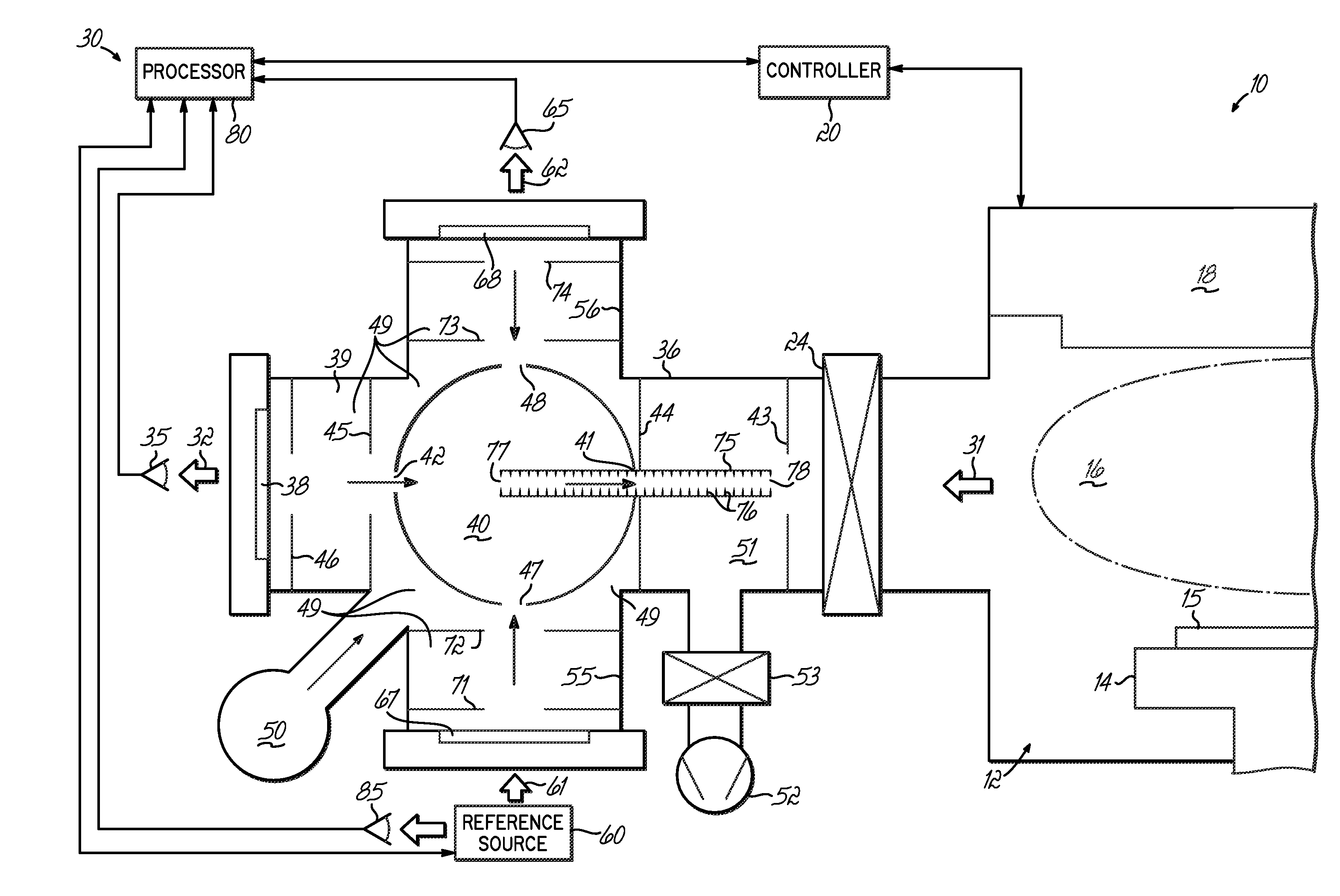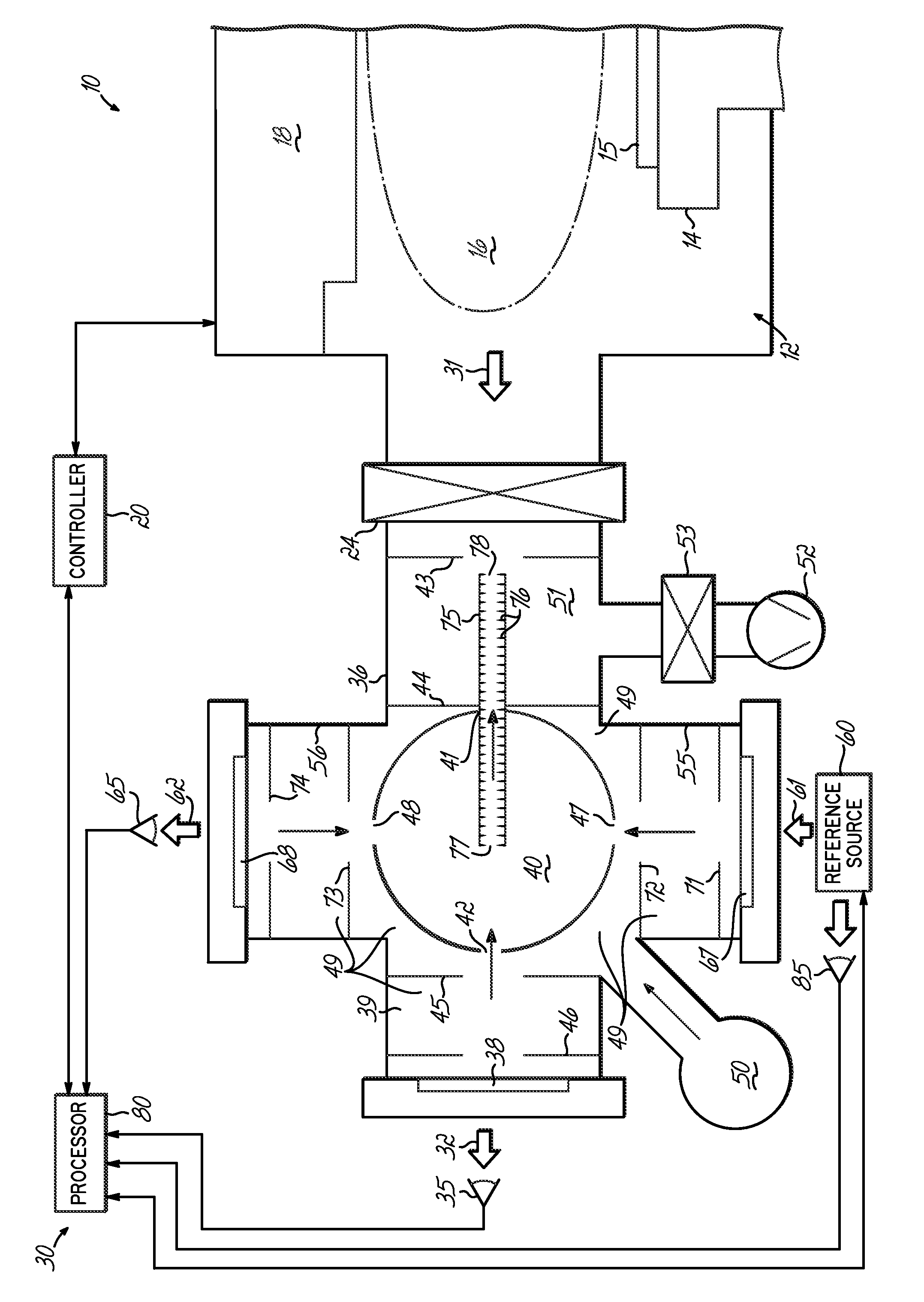Self-Calibrating Optical Emission Spectroscopy for Plasma Monitoring
a technology of optical emission spectroscopy and plasma monitoring, which is applied in the field of plasma processing, can solve the problems of processing system downtime, affecting the accuracy of optical measurements, and high cost, and achieve the effect of improving the simplicity and reliability of instruments, improving accuracy and usefulness, and prolonging the time between window servicing
- Summary
- Abstract
- Description
- Claims
- Application Information
AI Technical Summary
Benefits of technology
Problems solved by technology
Method used
Image
Examples
Embodiment Construction
[0022]The FIGURE diagrammatically illustrates a plasma processing system 10 of the type used for processing semiconductors and other related substrates. The system 10 includes a vacuum chamber 12 in which is situated a substrate holder 14 on which may be mounted a semiconductor wafer 15 for processing. A plasma source is provided within the chamber 12 to energize a plasma 16 in process gas maintained under vacuum within the chamber 12. The plasma source can include a pair of electrodes, which can include the holder 14 and a sputtering target or other electrode 18, or can include some other plasma generating system, for example an inductively coupled plasma (ICP) source that typically includes an RF inductive or capacitive electrode coupled to the plasma from inside or outside of the chamber 12. A programmed controller 20 is typically provided to maintain reliable and repeatable operation of the apparatus 10 and to precisely control the process.
[0023]To monitor the condition of the p...
PUM
| Property | Measurement | Unit |
|---|---|---|
| volume | aaaaa | aaaaa |
| exhaust volume | aaaaa | aaaaa |
| plasma emissions | aaaaa | aaaaa |
Abstract
Description
Claims
Application Information
 Login to View More
Login to View More - R&D
- Intellectual Property
- Life Sciences
- Materials
- Tech Scout
- Unparalleled Data Quality
- Higher Quality Content
- 60% Fewer Hallucinations
Browse by: Latest US Patents, China's latest patents, Technical Efficacy Thesaurus, Application Domain, Technology Topic, Popular Technical Reports.
© 2025 PatSnap. All rights reserved.Legal|Privacy policy|Modern Slavery Act Transparency Statement|Sitemap|About US| Contact US: help@patsnap.com


